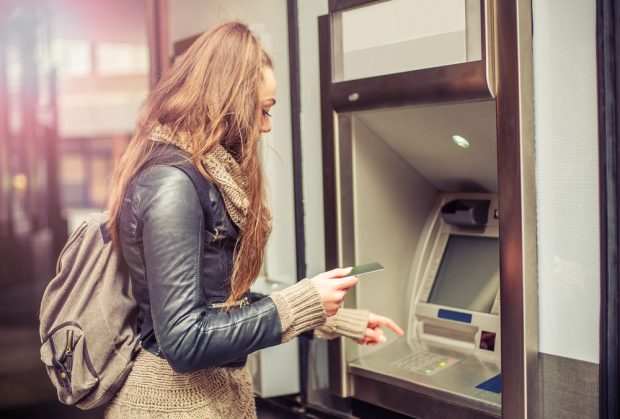 Source: Shutterstock.
Source: Shutterstock.
The COVID-19 crisis has had a major impact on credit unions and other financial institutions. More than two years after the pandemic reached American shores, some institutions are just beginning to reopen physical branches and welcome members back for daily face-to-face financial services. The pandemic spurred a massive increase in demand for drive-thru, ATM and mobile transaction options – and even as physical locations reopen, these alternative options have all remained popular. Why?
The truth is that, while pandemic closures certainly accelerated the process, the shift away from face-to-face financial transactions had already been underway for some time, driven in large part by younger generations more comfortable with smartphone apps and online services. Recent research from Ipsos-Forbes Advisor showed that 76% of Americans now use their bank or credit union's mobile app for everyday tasks like depositing checks – tasks that just a few years ago required a trip to a physical location. This has resulted in a drop in traffic to those locations, which has in turn led many financial institutions to rethink their approach to physical security. Fortunately, modern security technology has evolved alongside consumer preferences, ensuring that all financial institutions still have the resources they need to remain secure.
Recommended For You
New Trends in Retail Financial Services
With less foot traffic coming to physical locations, many financial institutions have begun to embrace automation. When entering a location today, it is not uncommon to see higher usage of ATMs and interactive teller machines (ITMs), a relatively new innovation. Rather than walking up to the counter and interacting with a live person, members can choose to interact with a machine capable of performing most of a live teller's basic functions. This was particularly valuable during the COVID-19 pandemic, as it enabled touchless banking, but it has persisted as a valuable way for credit unions and other retail financial institutions to reduce manpower and operate more efficiently.
Most ATMs do not require users to enter the physical branch location. Instead, they are located outdoors, or in a secure lobby connected to the branch where they can be accessed at all hours. Naturally, this has made them a target for criminals looking for an easy score: Rather than attempting to rob a teller, they can rob the ATM instead. Drive-thru ATMs have faced similar challenges, with "hook-and-chain" attacks (in which a perpetrator attaches a literal hook and chain to an ATM and attempts to pull it free with a vehicle) on the rise. Addressing these problems requires a new approach to physical security – an approach that can also help bring members back to their local branch.
Improving Security and the Member Experience
Security guards used to be a mainstay in retail branch locations, but smaller branches today rarely have a guard present. Likewise, a handful of cameras located behind the tellers used to be enough to give a clear picture of what was happening within a branch. With fewer members availing themselves of physical tellers, this too has become insufficient. Instead, financial institutions are looking for more integrated solutions, including modular camera placements designed for ATMs. These devices can be used in a multifaceted way, with multiple applications. Yes, they provide a baseline level of physical security, but advances in camera quality and processing power mean new analytics are now in play as well.
Analytics can serve a wide range of purposes. From a security standpoint, they can be used to enable facial recognition or other biometrics for the purpose of multifactor authentication (MFA). This can help ensure that the person at an ATM is the actual account holder, but it can also be used to identify known criminals. A camera might recognize a perpetrator whose image was captured during a prior ATM robbery and alert the authorities that a crime may be in progress, adding an extra layer of security. Similarly, license plate detection in drive-thru lanes can help identify hook-and-chain perpetrators before they can strike again.
These analytics can make members feel safer in other ways as well. Because they provide shelter from the elements, ATM booths are often used by unhoused people as a place to rest – especially at night – which can make credit union members feel unsafe. Loitering detection analytics can help identify these occurrences and alert the authorities, who can help the individual find a safer place to sleep. Finally, it's important to note that analytics can be used in ways that go beyond security. They can enhance the user experience in small ways, such as greeting the member by name when they are recognized and streamlining the process by automatically calling up known user preferences. At a time when credit unions are looking for ways to draw younger existing and new members back to physical locations, these small experience enhancements can go a long way.
Modern Financial Institutions Need Modern Solutions
Every industry evolves over time, and credit unions and other retail financial institutions are no exception. As members move away from daily face-to-face interactions, securing tools like ATMs, ITMs and other contactless options has become more critical. Fortunately, today's security tools have lived up to the challenge, giving branches easily integrated end-to-end solutions capable of augmenting existing resources while offering bold new options in the form of advanced analytics.
The same tools that allowed retail locations to detect queues, loitering, face masks and other pandemic concerns are today helping credit unions identify and greet members, alert authorities to suspicious or unsafe behavior and recognize criminals before they can commit a crime. These solutions are giving credit unions ways to not only remain secure, but enhance and streamline the member experience, giving people a reason to venture forth once more. Online transactions via websites and mobile apps are going nowhere, but physical banking still has an important role today – and making the experience as safe and frictionless as possible is essential.
 Stephen Joseph
Stephen Joseph Stephen Joseph is Segment Development Manager, Banking & Finance for security and business performance solutions company Axis Communications.
© Touchpoint Markets, All Rights Reserved. Request academic re-use from www.copyright.com. All other uses, submit a request to [email protected]. For more inforrmation visit Asset & Logo Licensing.






